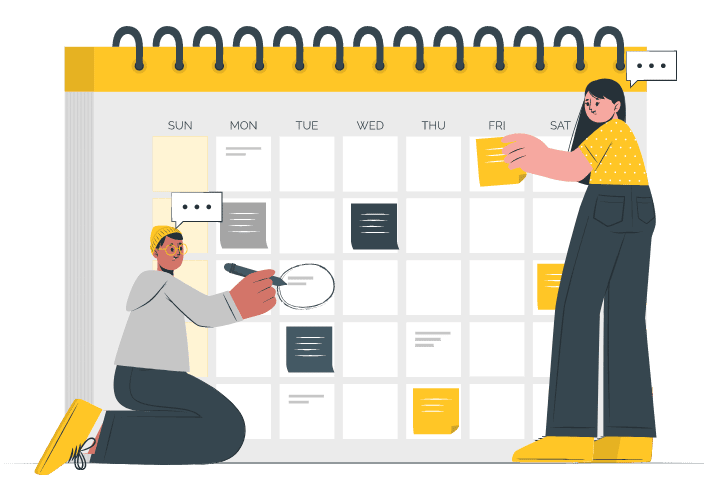The phrase ‘day one remortgage’ is commonly used within the mortgage and property industry.
If taken literally it is unlikely to make any sense to someone new to mortgages.
The term was coined many years ago when buy to let as we know it today was born. The need to remortgage so soon after buying a property still exists and we will run through how this works and how to apply for one.
What is a day one remortgage?
The name ‘day one remortgage‘ can be a little confusing as it is not the name of a specific mortgage product and it does not have to take place on day one of owning a property!
It is used to explain a scenario where someone needs to remortgage a property that they have only just bought, typically this would be within six months of legal completion.
Of course this will include applying for a mortgage after one day!
This type of mortgage arrangement was also known as a ‘back to back’ mortgage, referring to the process of buying a property with lender A and then immediately after completion remortgaging to lender B.
The second mortgage application used a higher property value and enabled the investor to withdraw their original deposit monies and they now have a house bought with no money down! This left the lender with all of the risk.
The practice accelerated negative equity situations and led to repossessions during the 2008 financial crisis.
Nevertheless. there are still genuine circumstances where a remortgage is needed even though the property was purchased very recently.
Due to past issues, many of the high street lenders are unwilling to offer a remortgage until you have owned the property for at least six months.
This is often referred to as the ‘six month mortgage rule’.

However, there is no actual rule to follow and so each lender can decide what to do.
By using a whole of market mortgage broker you will be able to get access to specialist lenders and find a re-mortgage deal regardless of how long ago you became the owner.
How do they work?
Arranging a day 1 remortgage is much the same as arranging a normal remortgage. You will have the usual remortgage choices of mortgage term, repayment method and interest rate.
The maximum loan to value amount differs between lenders but 75%-85% LTV is normally achievable.
You apply for the new mortgage and wait for the lender to approve your application and issue their mortgage offer. Your solicitor will use this remortgage money to repay any secured mortgages or loans you have used to purchase the property initially.
When you refinance so soon after completion there can be problems recognising you as the property owner at Land Registry.
Unfortunately the ownership records (title deeds) are not updated immediately and it can be several weeks before you appear as the registered owner. One way to overcome this is by requesting proof of ownership from the conveyancing solicitor that dealt with your purchase.
It’s important to be aware of any early repayment charges or exit fees from the loans you will be replacing. Timing could be key to avoiding a large ERC penalty.
CONTACT A REMORTGAGE EXPERT
If you wish to investigate your re-mortgage options we can put you in touch with a fully qualified whole of market mortgage broker.
When would you need a day 1 remortgage?
The following scenarios are just a few of many where a remortgage may be needed shortly after buying or acquiring a property.

You have recently inherited a property
If you have recently inherited a property perhaps you need to raise money against it for personal reasons. If there are also other owners then a remortgage could be used to buy them out. Or extra money could be required to carry out some repairs or essential works.
The property was originally bought at auction
Residential properties that are sold via property auctions generally have issues that a standard lender would refuse to lend against. Therefore many auction purchases are made using short term bridging loans. Once the remedial work has been completed there is a need to refinance over to a lower cost loan if the property is to be retained.
You bought the property with cash
If you used your own money to buy the property then it is natural to want some of it back to reinvest into other ventures. A day one remortgage will allow you to raise a maximum of 75%-85% LTV of the current property value.
Another opportunity has come up
If a great deal comes your way then money sometimes needs to be raised quickly. A capital raising bridging loan against one of your properties would be the fastest but a day one mortgage would be cheaper overall if time allows.
Are there any alternatives?
A day one remortgage is a good option if you intend to keep the property for the foreseeable future, say three years or more. You should be able to spread the repayments over a convenient term and choose an affordable interest rate.
If you intend selling the property in a year or two then it’s possible that another finance setup may be more beneficial. Most remortgages will have early repayment charges, which will be enforced when the loan is repaid.
Discuss your immediate plans with your mortgage adviser and also make sure they are aware of your intentions over the coming few years. This additional knowledge will allow them to make the best choices for you.
In some cases, if you currently own a property outright, a bridging loan can be used to raise money quickly and then once the six month period has passed, you can apply for a remortgage with a greater number of lenders to choose from.
How to get one
On the face of it, applying for a capital raising mortgage on a house you bought or acquired recently shouldn’t pose any problems, especially if it is unencumbered.
But due to the six month mortgage rule borrowers would be spending hours contacting different lenders in the hope that one of them can help.
Your best course of action would be to seek advice from an independent mortgage broker. Broker’s are experts in mortgages and they will be able to search for lender’s that are happy accepting applications within the six month period.
Occasionally you will find a high street lender who is amenable, but mostly the deals are provided by niche or specialist lenders.
There are some mortgage lenders that will only deal with brokers, so borrowers are unable to approach them directly. Others will offer exclusive lending deals just to the brokers they work with.
Your broker will scour the market looking for a suitable remortgage deal. They will then be able to help you make the mortgage application and assist with any queries or problems that may arise along the way.
How long does it take to get a day one remortgage?
Once you have made a mortgage application it would take 4-6 weeks for the lender to approve the application and then issue a mortgage offer.
After accepting the offer you could have the funds in 5-7 days.
Are they available for buy to lets?
Yes.
Brokers will be able to offer day one remortgage solutions for buy to lets, holiday lets, multi-unit freehold blocks and HMO’s.
Can you release equity on an inherited house?
If you have recently inherited a house, or will do soon, you may be wondering if you can release some equity from this new asset?

What is the six month mortgage rule?
The ‘6 month rule’ is not really a rule at all and it is certainly not an enforceable regulation or law.
Guidance from the Council of Mortgage Lenders (CML), now known as UK Finance, is given to lenders encouraging them not to accept applications against a property until the owner has been registered at the Land Registry for at least six months.
Some lenders will extend this time period further to 12 months.
The guidance is an attempt at reducing money laundering through property transactions and also to avoid lending against inflated property valuations.
You will find more useful information in our article: What is the 6 month mortgage rule?
The next steps
If you are in any one of the situations described above, or something similar, then an independent mortgage broker will be able to help you.
We work with brokers who understand bridging loans, remortgages, capital raising, buy to let and more. They have access to the high street lenders, commercial banks and everything in between.
After a free initial discussion they will be able to explain what type of finance solutions are possible for you.







